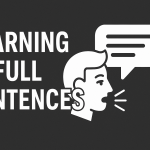I have been learning languages all my life. My adventure with languages began in the early 1990s. At school I studied English and took a course in German. Later I studied applied linguistics at university, where I additionally learned some French. Still later, I started learning Dutch, Italian and Indonesian. In total, I have taken more than 50 group language courses and more than 1,000 individual lessons online in my life.
Since I am passionate about languages and want to make it easier for others to master different languages, I have dedicated my life to deliberating about language learning and language acquisition. My goal was to create a system that takes into account the actual needs of learners and is focused on the two most important aspects, namely speaking and being understood.
Along the way, I realized the importance of listening exercises. After all, it turns out that the correct use of listening exercises not only helps us understand the language, but also trains our accent and speaking fluency.
In this article, I have described the most important findings and techniques when it comes to listening exercises. At end, I describe the listening tool that I have created based on everything I know about language learning.
TPRS method: Listening to understand the details
You probably know this exercise from language courses and exams. You listen to a text and your task is to answer questions or summarize the text. Very often it’s all about details, where ambiguity is programmed on purpose to confuse you. Time for answers is also usually limited, which introduces additional stress.
Such exercises seem important – after all, we need to understand what is being said to us. The problem is that these exercises rarely resemble dialogues from real life; the texts seem strange, they deliberately contain difficult vocabulary, etc. It happens quite often that the text we listen to is on a topic we know little about and on which we have nothing to say even in our native language.
Normally, we listen to something that interests us. Listening is quite often combined with speaking. After all, in order to communicate with others, we need to create a dialogue, not a monologue.
An interesting variation of this kind of exercise is listening to short stories, such as those offered in the Story Learning method of the well-known polyglot Olly Richards. He has published a whole series of books of short stories in different languages for English audiences, available for beginners and intermediate users. The stories contain carefully selected vocabulary, a full summary of the plot and questions to help understand the text. The stories are also available as audiobooks on Audible.
The ideal method for listening to such stories seems to be the TPRS method (Teaching Proficiency through Reading and Storytelling).
The following steps are recommended:
Step 1 – Listen to a short story
In this step, you just listen to the story and don’t focus on how much you will understand, even if you only understand a small part of it. The idea in this step is to focus on what you hear and familiarize yourself with the sound of the language, without looking at the recording transcript.
Step 2 – Memorize selected vocabulary
Now memorize some words and phrases from the story. Some of the vocabulary you certainly already know. You don’t need to learn the entire text.
Step 3 – Listen again
In this step, listen again to the same story from Step 1. This time you will already understand more, because you have worked on memorizing the most important vocabulary. Again, focus only on what you hear and don’t look at the subtitles or transcription.
Step 4 – Listen and read the text
In the fourth step you should listen to the same story again, but this time read the transcription along with it. Studying the text is helpful not only in filling in gaps in comprehension, but also in noticing syntax and grammatical structures.
Step 5 – Final listening
In the fifth and final step, listen to the recording again. Focus on how much you were able to learn with all the work you did in the previous steps.
Optional Step 6 – Shadowing
If you would like to practice a little more, you can add one more step: shadowing, or pronunciation practice. Repeat each line of the story after the speaker and see if you can replicate their pronunciation.
We write about the shadowing method later in this article.
Train your ear: Listening for pleasure
Listening for pleasure is listening with the main purpose not of understanding the message, but of enjoying the listening itself.
The idea is to simply listen to the language while riding your bike, in the car, at the gym, or wherever you are. This method is more like listening in real life, where the language appears in a more natural context. This listening exercise serves various purposes: it is mainly aimed at training the ear to become accustomed to sounds or their combinations, intonation, rhythm, etc. It tricks our brains because we think a particular language is natural to us.
Listen to materials at different levels, including those much more difficult than your current level. Listening exercises work best if you listen to things you already know, such as stories from your childhood (polyglots very often start with The Little Prince, The Lion King, etc.). Studies show that you can understand 25% more if you already know what the text is generally about. This also works for quite complex topics. Language has evolved over millions of years and shaped itself as a means of conveying information, through storytelling, for example. You don’t need to understand every word to understand the context.
So, what to listen to?
Audiobooks
If you are just starting out, you can start with children’s fairy tales or other well-known stories such as Peppa Pig, Beauty and the Beast, Sleeping Beauty, Cinderella, Snow White, The Ugly Duckling, The Little Prince, etc. You can also reach for any other book you have recently read in your own language. You can use platforms such as Audible, YouTube or Librivox (where you can find free audiobooks).
The news
You should also listen to the news in your native language first and then in the language you want to start speaking. This way you will understand more, even if you are at the beginning of your English learning. You can use popular news platforms or listen to the radio on Accuradio, Radio net, etc.
Songs
Start by listening to children’s songs. It’s also a good idea to read the lyrics of a song first and then listen to it on Spotify or YouTube. Music is special to many people, and some studies show that listening to songs is great for practicing speech melody, intonation, accent, etc. What’s more, it keeps part of our brain busy, so the other part can work very effectively. Listening to music improves sound and word recognition, teaches how words work in context, but also, surprisingly, improves your pronunciation, especially if you repeat or sing!
When it comes to songs, we have come to understand from our own experience and conversations with many students that they are a very important, as well as enjoyable, part of learning a foreign language that can help you speak like a native speaker. If you want to learn more about this, read the article on “Learning a Language Through Songs.”
When I was learning Italian, I spent the first two years listening to all kinds of texts (mostly songs), and the results are amazing. To this day Italians say that my intonation and accent are perfect.
Speech Shadowing: Listening with repetition
The best-known method of listening with repetition is the so-called shadowing method. The technique was developed by Alexander Argüelles, a Canadian polyglot, linguist, and holder of a title in the Guinness Book of World Records, who speaks 50 languages.
Long story short, this method is based on learning a language the way you learned your first, native one. The idea is to repeat exactly what you hear. Imitation is the best way to master not only colloquial speech, but also accent and intonation.
With the Alexander Arguelles method, you listen to a conversation or monologue in the language you are learning and repeat the text sentence by sentence. According to the researcher’s original idea, the text should be quite long, but it is permissible to slow down the speaking (e.g., you can arrange for the speaker to speak slowly or for the recording to be slowed down) to actually keep pace with the text you are listening to.
Although such a method looks interesting, it is very difficult to implement. Repeating the text for a long time is tiring. What’s more, with a longer text, you can very quickly get lost after just a few sentences and lose motivation, and this will certainly not contribute to the development of language competence.
That’s why we at Taalhammer have developed a modified version of this method that is simple to implement.
Modified shadowing method – Taalhammer’s solution
Although the shadowing method is promoted as a quick method of learning a language, we see some limitations in it. At Taalhammer, we tested the method in the form that Argüelles suggested and found it to be very impractical, maybe because it’s difficult to find a text that works for the method, but also for you and your skills.
So we tested other variants that use shadowing, working not with whole texts, but with words and sentences.
In our application, you first hear the item in your source language. Then you have time to think about translating it into the target language. If you know the answer right away, say it out loud. If not, try scanning your memory (to exercise your memory muscles). After a few seconds, you will hear the text in the target language, so you can check if your answer is correct. Immediately after that, you will again have time to repeat your answer. Once again, say it out loud!
The whole sequence looks as follows: Source language – Pause – Target language – Pause – Next item. This is similar to learning your first language, as you have the ability to repeat the sounds exactly as you hear them. This is the best way to hack your memory even more, but it’s also a great support for learning accent and intonation.
Although it took us years of testing, experience and reviewing materials, we finally developed a feature that helps you train listening and speaking: the listening mode in Taalhammer. We offer a great listening exercise where you can listen to all the items you learned earlier, trying to replicate the pace and accent of the sentence you heard. Our algorithm will arrange the items in such a way that the ones you do the least well at remembering will come first. What’s more, since the sentence or phrase appears first in the source language, you get a translation when in doubt. We also wanted you to be able to learn whenever the opportunity arises. That’s why you can do our listening exercises hands-free – just press PLAY at the very beginning.
Take advantage of your movement
Alexander Argüelles postulates that when using the shadowing method you should move around, not sit at a desk.
For example, you can go for a walk in the park. The idea is to occupy your body with something automatic (you don’t have to think about walking to walk), so during this activity your brain can focus more on the learning process; concentration then works much better. A great way to increase your performance while learning by ear is to exercise, for example at the gym.
A number of recent studies indicate that regular physical activity, such as weightlifting, cycling, walking, running or aerobics, has a beneficial effect on brain biology. It makes the brain more receptive to learning processes by increasing oxygen flow and the amount of neurotransmitters. This, in turn, contributes to improved focus, concentration, memory ability and effective stress management. However, it’s worth avoiding overdoing it, as too much training can increase stress levels, potentially affecting the functioning of the areas responsible for memory.
Try Taalhammer – listening is not enough
Listening exercises help develop all the skills needed to communicate in a foreign language. Of course, by just listening you won’t start speaking fluently.
Another very important element is learning and repeating whole sentences effectively. That’s why at Taalhammer we have developed our proprietary algorithm for spaced repetition. In addition, we’ve created core collections which contain the most common words in the language and variations of sentences with these words, such as questions, negations, conditionals, etc. Combined with the algorithm and listening exercises, this gives you a powerful tool that, over time, will develop habits like native speakers have, a kind of intuition for how to build sentences correctly. And this, in turn, will give you the confidence to start conversations in a new language.
In our app, we’ve combined the best and most effective aspects of many proven, research-backed methods to create the perfect combination of exercises and materials. Learn to speak and listen in English by starting learning today!






